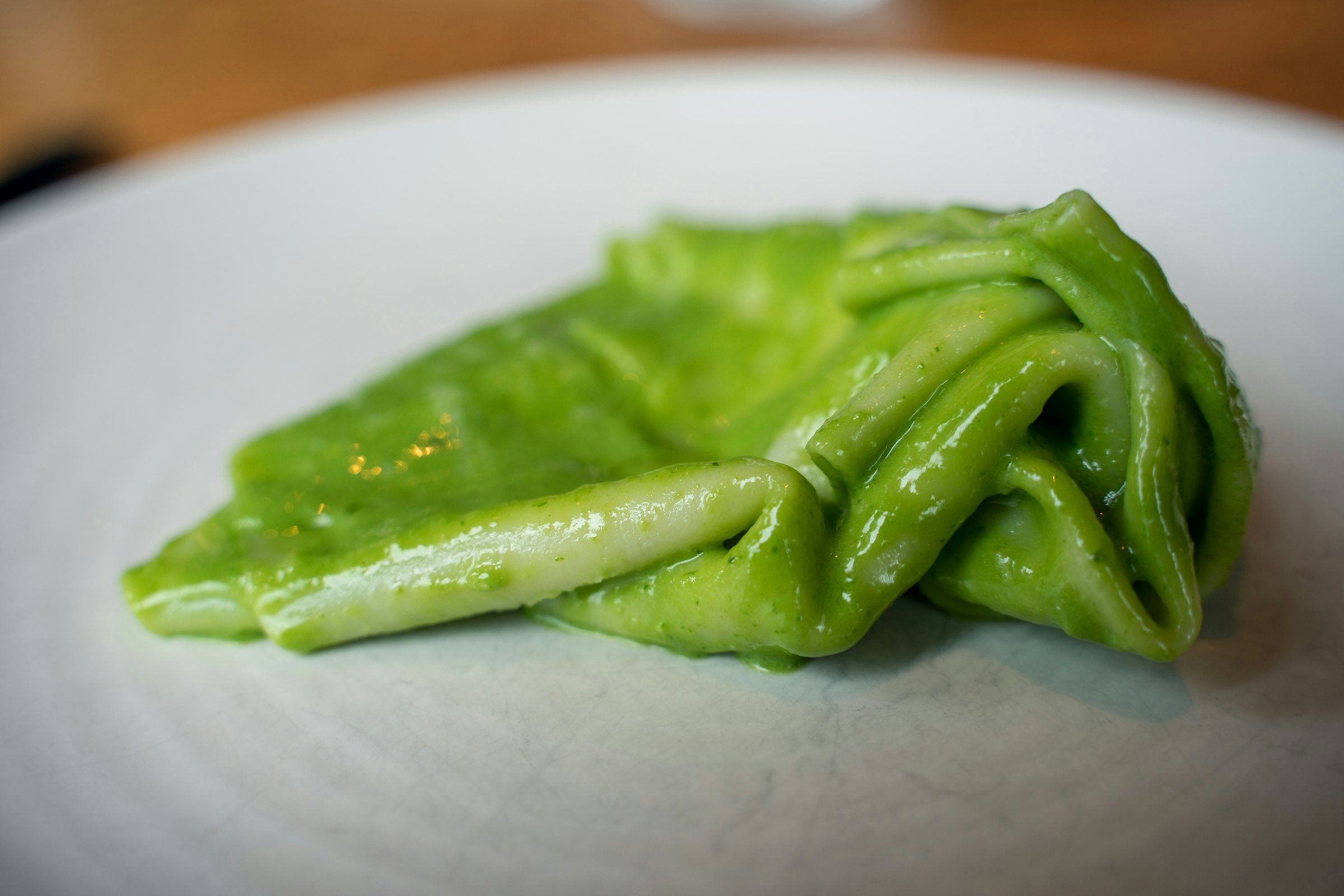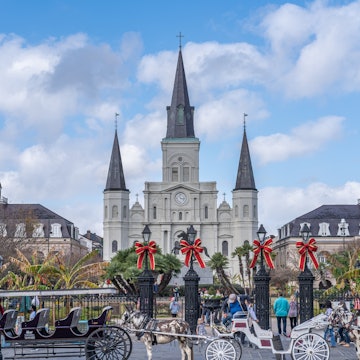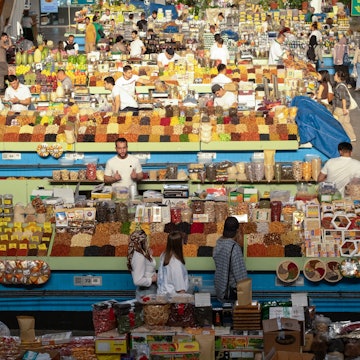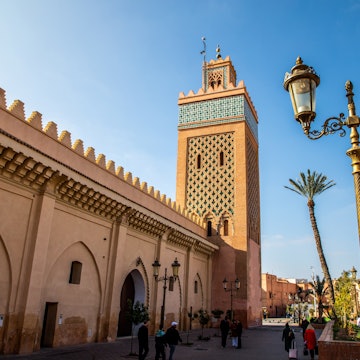
Taste Maine's rich culinary heritage on this Portland sustainable food tour
Jan 17, 2020 • 5 min read

Learning where Maine restaurants' cooking ingredients come from is part of the fun when eating out in Portland © Lily Girma / Lonely Planet
Two years ago, Bon Appétit named Portland, Maine its 2018 Restaurant City of the Year. If you aren't familiar with the Pine Tree State's biggest city, you might be surprised that, with a population of just 67,000, Portland is home to more than 400 restaurants. But it’s not just the number of dining options that distinguishes Portland’s gastronomy scene – it’s also the sustainability.
Few had examined the connection between Maine’s food system, its deep commitment to conservation, and the city’s passion for tracing ingredients to the source until Sarah and Bryce Hach created Maine Food for Thought walking tours in 2017.

The couple met in graduate school and relocated to the greater Portland area after living in nine different states. With careers spanning public policy, economic development, and education, plus a strong mutual love of food, they quickly realized the story of Maine’s unique culinary scene was one worth telling.
“We saw that there were so many rich food narratives coming out of the Maine food system,” says Bryce Hach .
That’s the focus of their Land, Sea to Fork tour, during which participants stroll Portland’s historic streets and experience the city’s best sustainably sourced restaurants, all while learning about the meaningful journey Maine’s food takes on its way to your plate.

On the tour, you learn how Maine’s large, diverse landscapes – from the nutrient-rich Gulf of Maine and 5,300 miles of coastline to a vast network of inland farms close to the city. You’ll also hear about the solid community of entrepreneurs who are passionate about the state’s outdoor heritage. And you’ll learn how people and places have created a strong food culture that is farm-and-sea-to-fork.
Along the way, participants sample seven dishes from a classic Maine lobster roll to creative plates from local or immigrant chefs using homegrown Maine foods. On each tour, a pamphlet is distributed with a list of the restaurants, plus the Maine farms and fisheries supplying them.
While the tour is something best experienced first-hand, here are four qualities of Portland cuisine you'll discover – leaving you with plenty of food for thought about the meals you enjoy at home and away.

Creativity meets blue collar resourcefulness
The walk kicks off at the aptly-named Union in the heart of Portland. It’s easy to see why they chose the tagline “altogether local” for a menu that celebrates ingredients sourced from local farmers, fishermen, foragers, and craft brewers.
Maine’s magical union (pun intended) between its land and sea harvesters shines in the first dish you’ll try. This bowl of chowder starts out familiar with clams from the Gulf of Maine and homegrown potatoes, then takes a turn towards the unexpected when those cornerstone ingredients are soaked in a coconut milk based soup inspired by the chef’s travels to Asia.

At Luke’s Lobster, you’ll see the inner workings of a fishing wharf on Portland Pier, and hear about Maine’s sustainable lobster fishing regulations — from size limits to licensing and in-trap feeding methods. You’ll appreciate the resourcefulness that went into the lobster rolls you’ll taste afterwards on a seafront deck, with fresh lobster caught right in Casco Bay.

Honoring Portland’s rich immigrant community
The Greater Portland area is home to a large immigrant community from India, the Philippines, England, and Canada, including refugees from Somalia, Iraq, and the Congo. You’ll glimpse how this has enriched the city’s food scene, which Food for Thought compares to being like a journey around the world.
“While immigrants represent only 4 percent of our population, over 25 percent of Portland’s restaurants are owned by immigrants,” Hach explains. Chefs whipping up fusion dishes inspired from their native homes, yet sourced from and showcasing Maine’s homegrown ingredients, have created a one-of-a-kind culinary community that’s the envy of other American foodie hubs.

At Solo Italiano, stories emerge while you sample Genoa-born Chef Paolo Laboa’s Mandilli al Vero Pesto Genovese — an authentic Genovese basil pesto sauce made using Maine-grown basil and a 30-year family recipe, on melt in your mouth handkerchief pasta, made daily on site.
Olivia’s Garden supplies the fresh basil — a state-of-the-art greenhouse in New Gloucester that uses 15 species of predatory insects in lieu of pesticides. The basil goes from farm to Solo’s kitchen in under two hours. Other examples on this sustainable food walk include Japanese and Mediterranean cuisines.

Exploring Maine’s seasonal produce
Beyond meeting Portland’s celebrated chefs, Food for Thought teaches the importance of understanding a destination’s landscape and its key crops.
Maine’s farms, for instance, are less than 100-acres in size and smaller compared to those in the rest of the country, which translates into high quality, artisanal type of produce. Its outdoors, including its northern location, also play a role in attracting farmers and in limiting the growing season due to the harsh weather.
“Young farmers are coming into Maine 25 times faster than the national average,” Hach adds, “lured by the water, the land, the rich local culture, and demand for authenticity.”
Seasonal Maine crops you’ll taste include wild blueberries — a native bush that grows wild in Maine’s forests — potatoes, and beets. You’ll sample these at Evo Kitchen + Bar, fusing contemporary Mediterranean dishes using Maine’s seasonal ingredients.

Voting beyond the booth
Aside from delving into Maine’s food system and showing off the way it unites growers and chefs, and celebrates diversity, Sarah and Bryce’s tour mission is simple: to create change one fork full at a time, by getting you to think about the origins of the food on your plate and the trip it took to get there.
Fun fact: the average American meal travels over 1,500 miles to get on a plate.
Discussions get lively on the tour, as participants share their experiences with sustainable food, and attempt to define buzzwords such as “locally sourced,” “sustainable,” and “traceable.”
“We don’t just vote when we are at the voting booth,” Hach explains. “We vote through the everyday decisions we make. Nowhere are these decisions more magnified or intimate than what we’re going to be putting in our bodies.”
From learning about sourcing food with less chemicals, pesticides, and additives, to contributing to a system that conserves nature and water, and supports local farmers while reducing emissions, this isn’t your average walking food tour. But that’s exactly why you’d sign up.















